Kanban is still accompanied by many myths and misunderstandings even after many years of its use. Often it is misunderstood as just a task board. But in reality, this method is much more comprehensive and will greatly help you identify sources of waste and eliminate them. So in this Kanban training session, you will learn the basics and how to continuously improve your team’s efficiency.
Are you also finding the content of your sprints constantly changing? Together we will compare how Kanban method differs from the Scrum framework. And you’ll also learn when it’s more beneficial to use Kanban than Scrum with your team. Although many companies still consider only the Scrum framework to be agile, in many large companies Kanban still represents more than 30 percent of all agile teams.
Let’s talk about the types of waste and how you identify them. You will also be introduced to Value Stream Mapping in the training and learn a number of practical lessons on how to use it with your team.
Kanban training is also recommended for new scrum masters, as they will often encounter its use in their teams. But it will also be used by members of agile teams interested in this topic, product developers, agile coaches, or project managers or internal auditors. You will be guided through the course by an experienced trainer who has a lot of experience in using and training Kanban.
Agenda
- Kanban – when does it fit and why?
- Kanban system
- Muda, Mura, Muri – sources of waste
- Kanban board
- Basic metrics
- Value Stream Mapping – what it is, benefits, procedure, experience and benefits
- Cumulative Flow Diagrams
- Kanban Cadences
- Compare Kanban and Scrum Differences
- Kanban principles
- What is Scrumban?
A lecturer who will guide you through the training
Jan Šrámek is an enterprise agile coach with experience with agile from both corporate companies and start-ups. The approach to agile transformations, as well as to training, is based primarily on practical experience, where he worked for approximately 7 years as an analyst and later as an architect in development teams in the financial sector. He experienced a number of changes that agile and agile transformation brings. It adheres to the principles of Agnostic agile. He prefers to set agility according to the context in your company, instead of a dogmatic approach according to the manual. Honza's strength is diplomacy, but also great patience, which allows him to work with agility even with quite distinctive personalities.In addition to experience in the SW development environment, Honza has also gained a lot of experience in the field of agility in business, human resources, finance, management coaching and more. He strives to enforce the principles and rules he recognizes with other employees and collaborators at Lucid Bay Digital. A number of agile principles are reflected in the functioning of Lucid Bay Digital and so the things we recommend we live by ourselves
Optional training modules
These modules/discussion modules can be added to our trainings by agreement. If you didn't find what you were interested in, don't worry, contact us and we'll come to an agreement.
- Stakeholders and agility
- First steps with an agile team and how to gain the trust of the team
- Retrospectives, what are their parts, what to do if the team seems to have retrospectives too often
- Getting to know Atlassian JIRA and Atlassian Confluence
- How the development team's standard SDLC (SW development life cycle) works
- How the analysis will changes after the transition to agile
- Types of tests in agile teams, changes in testing after the introduction of agile
- How brainstorming works, the possibility to try brainstorming facilitation on a selected topic and feedback
- MVP – Minimum Viable Product
- Agile roadmaps
- OKR (Objectives and Key Results)
Similar and related training
We will teach you the basics of Kanban and how to recognize when Kanban is suitable to use. The course is practical and suitable for beginning scrum masters.
You will learn the necessary theory and then try to write your own User Stories. In addition, we will try to break down too large User Stories into smaller ones.
The first part of the Lean Startup course where we will teach you how to prepare a simple business plan without wasting a large amount of time with its preparation and yet bringing you useful information.
This course is literally packed with practical experience gained from working with agile teams and agile transformations. We will take you through the basics of the Scrum framework from theory to practice. The course is designed for members of agile teams or those interested in understanding agile approaches.
This is a series of several trainings that put together a minimum of what a Scrum Master should be able to do. Since it is a comprehensive course, it is possible to arrange the division of this course into several parts.
On the course you will learn what every good product owner should be able to do. In addition to the methodological basics, you will also learn how to prepare a product vision, a product roadmap and how to break down requirements into a product backlog.
Non-binding request for training or customized training
Are you interested in training? Or would you like to tailor the training to your needs? Write us!


